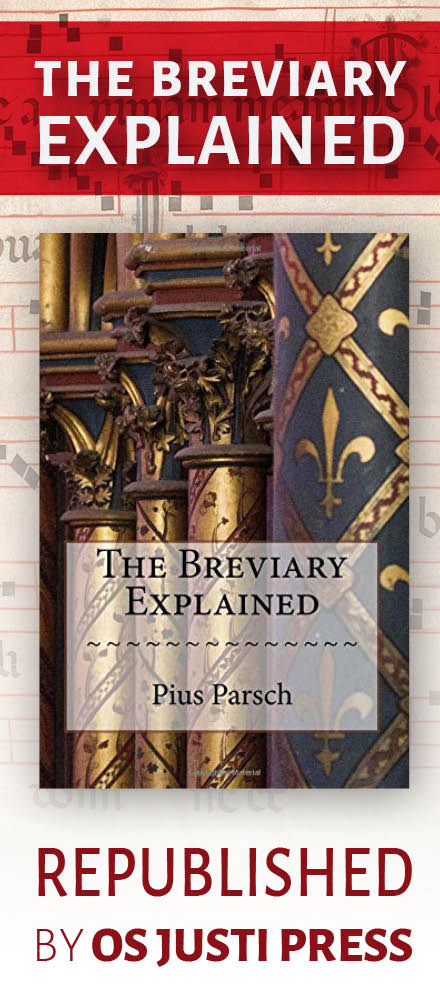Since the release of the Motu proprio Summorum Pontificum and its important clarification of the legal status of the usus antiquior, I have found myself increasingly interested in the early forms of response to the near effective abolition of the usus antiquior in those early days following the Council.To that end, I've found myself interested in the stories and accounts of lone parish priests who sought to preserve the ancient liturgy, such as Don Siro Cisilino of Venice, Italy, and Fr. Yves Normandin of Montreal, Quebec -- the latter of which wrote a book from the time, which has been translated into English as Pastor Out in the Cold.
I have also become interested in the histories of parishes that did likewise in some sort of fashion, particularly those which remained in some sort of relationship with their diocese; I think here of the history of the parish of St. Clement's in Ottawa, who published their parish history in relation to the liturgy under the title, A Continual Sacrifice.
Further to that, I have found myself interested in some of the earliest literature which was produced, mainly in the form of booklets -- one can especially think of the early work of Michael Davies.
One might ask why this interest? For myself, something of this strikes me as being of value as a historical record and document of the early days of a movement -- a movement which has now gained a much wider impetus, recognition and justification by the Church herself, particularly in the light of present clarifications and developments surrounding the usus antiquior, not to mention new critical studies of liturgical questions.
For my part, I am not interested in any judgement of the relative merits of some of these historical reactions or the particular ideas that may be contained therein, but I am interested in the reaction itself and the earliest days of a movement which sought to preserve the usus antiquior and which questioned the way in which the liturgical reform was enacted, both in principle and in practice.
It is because this matter is primarily of historical interest that I have become interested in collecting the original editions; particularly those from the late 1960's, the 1970's and the early (pre-indult) 1980's -- rather than the reprints of the same.
To that end, I was delighted to acquire a small collection of some of the early 1st edition booklets of Michael Davies, published by Augustine Pamphlets in England, as well a supplement to the early English traditionalist journal Approaches, most of which were published in the mid 1970's:
I believe there may be a good cause to collect these original 1st editions of these sorts of works.
Can you Help?
To that end, if any of our readership have any of these sorts of things (including original editions of the books on similar topics) they would like to either donate or sell to the NLM for this cause, please do email me to discuss possibilities.
For example, does one have the 1st edition of the Davies booklet, "The Tridentine Mass" (the one pictured above is actually a reprint mimicking the 1st edition), or the first edition of "The Legal Status of the Tridentine Mass"?
Does one have a first edition (in decent shape) of the Arlington House edition of Michael Davies "Liturgical Revolution" trilogy? Or even single volumes? (I have volume 2 in this edition, but not volume 1 or 3 which I am looking for).
Does one have the first English printing of the Ottaviani/Bacci study? Early editions of periodicals and newspapers from the 1960's, 1970's or early 1980's that were dedicated to the promotion of the usus antiquior, such as the English journal Approaches?
Perhaps there are other materials of significance, be they books, pamphlets, booklets, periodicals, or what not by other authors?
At any rate, if you think you'd like to help and you think you see value in this NLM project of collecting together the earliest original materials of the movement please do contact me.
Just do keep in mind I am looking for the 1st editions of these things and in the original -- rather than photocopies or reprintings.




















